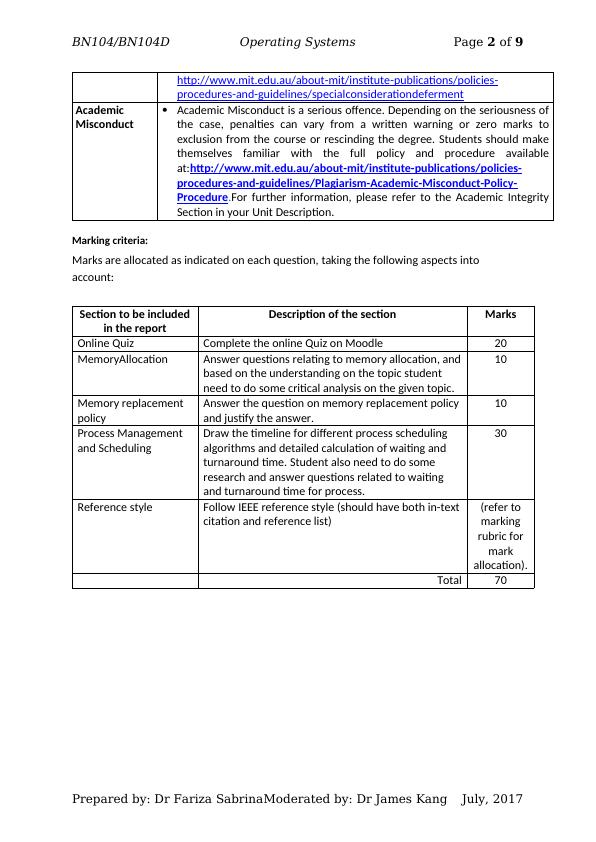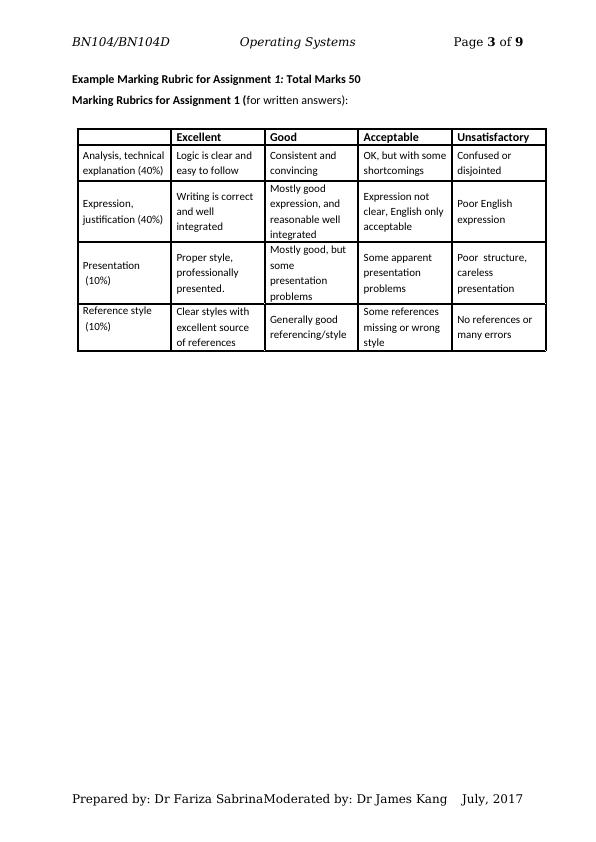BN104D - Introduction to Operating Systems | Memory and Process Management
9 Pages2069 Words72 Views
Melbourne Institute of Technology
Operating System (BN104D)
Added on 2020-03-01
About This Document
In this paper, we will introduce operating systems, we will know that memory and process management are allocation is the process of assigning blocks of memory. It will also explain the worst-fit algorithm advantages. This paper also describes how a simplified version of LRU works.
BN104D - Introduction to Operating Systems | Memory and Process Management
Melbourne Institute of Technology
Operating System (BN104D)
Added on 2020-03-01
ShareRelated Documents
End of preview
Want to access all the pages? Upload your documents or become a member.
Operating System - Desklib
|7
|544
|268
Operating system - Assignment Solution
|7
|636
|43
Practice Nursing in Australian Health Care System: Written Assignment 3
|12
|3914
|189
MATI3006 Numeracy 1 Coursework Brief Spring 2018
|31
|7153
|462
Numerical Skills, Concepts and Techniques in Business : Assignment
|25
|5323
|145
Statistics Assignment: Learning Outcomes
|22
|5068
|42



